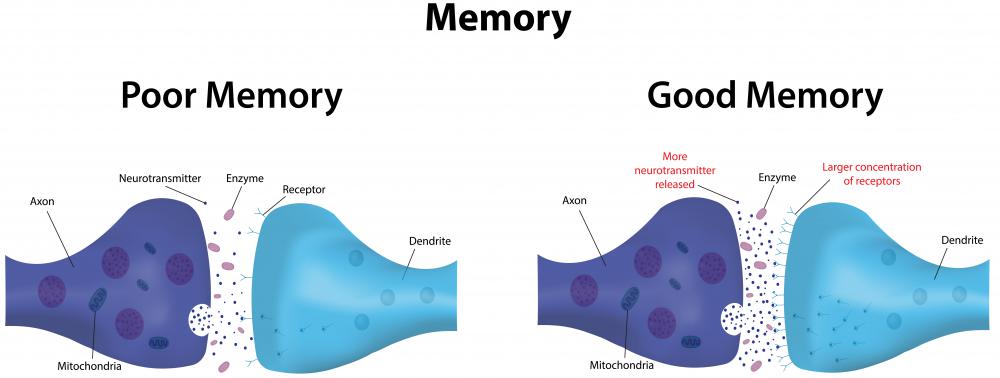At WiseGEEK, we're committed to delivering accurate, trustworthy information. Our expert-authored content is rigorously fact-checked and sourced from credible authorities. Discover how we uphold the highest standards in providing you with reliable knowledge.
What Is the Relationship between Neurotransmitters and Sleep?
Neurotransmitters and sleep are interrelated in that neurotransmitters are responsible for the majority of the modulation of brain activity; the sleep cycle in one biological phenomenon that has been shown to be profoundly affected by neurotransmitter modulation. The release of certain neurotransmitters and sleep cycle function form a continuum for which all stages of sleep, like the stage when a person first becomes unresponsive to stimuli and the stage in which dreams are experienced, can take place during a loosely predetermined time or phase of brain activity. Some neurotransmitters, like gamma-aminobutyric acid (GABA), are classically thought of as facilitating sleep, while others, like norepinephrine (NE), show the ability to facilitate arousal. Some transmitters, like acetylcholine (Ach), play an important part during both phases of consciousness. Cutting-edge sleep research suggests that other neurotransmitters may perform previously unknown and differing functions, like that of Ach, along the entire continuum of the sleep stage experience.
Excitatory neurotransmitters like NE, serotonin (5-HT), and histamine are released from their respective neurons during wakefulness. These neurotransmitters are released from many areas of the brain like the locus ceruleus, and posterior and anterior hypothalamus. The role of neurotransmitters and sleep initiation begins when the suppression of GABA and another inhibitory neurotransmitter, galanin, both released from the ventral lateral preoptic nucleus (VLPO), is revoked. It is at this point that the modulation of brain activity gears toward relaxation and loss of focus instead of cognition and concentration. This change of pace initiates other sleep-promoting chemicals like melatonin to be released from the pineal gland and the sleep-inducing, metabolic byproduct adenosine to begin accumulating in the forebrain.

These inhibitory neurotransmitters and sleep signals from the VLPO in the form of various chemical and hormonal messengers accumulate and begin to attach readily at any open receptor sites, starting the biological cascade that leads to cognitive and bodily rest. Adenosine appears to play a major role as to when the brain actually “switches” from one state to another. As was mentioned, the chemical is a natural byproduct of metabolic action and is produced during the wakeful state when moving, talking, and eating. The body becomes tired because as it performs wakeful movements, adenosine accumulates and starts to override wakeful desires with its sleep-inducing properties. People who accidentally “nod off” or can’t stay awake often have an overabundance of adenosine accumulation.

After the person has fully relaxed, neurotransmitters and sleep signals continue to lull brain activity. GABA, galanin, and other relaxing chemicals are continually produced to keep the body and brain asleep. During this time, other waste materials accumulated during the wake cycle are able to be transported and removed from the brain, promoting a feeling of refreshment and well-being upon waking. Rapid eye movement, or REM, the stage of sleep in which a person dreams, is facilitated by the release of small amounts of excitatory neurotransmitters. The rise of these neurotransmitters and sleep signal diminishing eventually wakes the person and the cycle starts again.
AS FEATURED ON:
AS FEATURED ON:














Discuss this Article
Post your comments